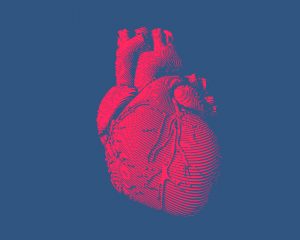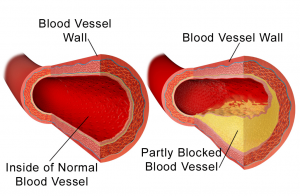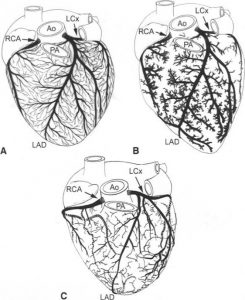Heart Disease; Whose Hearts are Better Designed than Ours?
Posted by Phil Heler, MD on September 27, 2019Heart Disease is on the increase for the first time in 50 years. Are there better evolutionary designs in nature?
Last week I wrote about how the fast-emerging trend of a more plant-based diet and the associated health benefits i.e. high fibre and reduced cholesterol. Vegan and flexitarian (which is a mainly plant based diet with occasional meat or fish) and vegetarian diets are now officially mainstream. Veggie options no longer vie for a dusty corner of the menu, even in fast-food chains. Now they are jockeying to appeal to climate-conscious young people. Burger King, often seen as the little brother of McDonald’s (their intense competition with one another is outlined in this link) , has stolen a march on its main rival by selling the ‘Impossible Whopper’ made from potato and soy proteins and in terms of texture, flavour, appearance it is hard to tell the difference. Interesting times indeed. For this week however, my last article on heart disease, we take a look at the key component of our vascular system; our heart. The most frequent condition that affects our hearts is coronary heart disease (CHD). This the most common type of heart disease. It is also the most common cause of heart attack and it is on the rise for the first time in 50 years.
How Hearts Vary in the Animal Kingdom
Like all vertebrates, we as mammals have muscular hearts that contract repeatedly to pump blood, which delivers oxygen and nutrients throughout the body and removes waste products like carbon dioxide. Like other warm-blooded animals, we expend a lot of energy and need a lot of oxygen. Our four chambered hearts make this possible. It gives us an evolutionary advantage: We’re able to roam, hunt and hide even in the cold of night, or the chill of winter. Hearts are indeed amazing things and have evolved into different shapes and sizes throughout the animal kingdom that may confer natural advantages when it comes to heart disease. Now for some proper pub facts.
Heart rates vary significantly. A Blue Whale has a heart rate of 8-10 beats per minute (BPM) and can be heard up to two miles away by sonar. Our hearts meanwhile beat on average about 72 BPM but the smallest mammal on earth (the Etruscan Shew) has an average heart rate of 835 BPM. A hummingbird’s heart rate reaches 1,260 BPM during flight. Hearts come in different sizes too. The average human heart weighs about 0.3 kilograms but a Blue Whale’s can weigh anywhere up to 800kg and is the size of a small car. Generally large mammals have slow heartbeats and lead long lives and small mammals have short lives and fast heartbeats (our friend the Etruscan Shrew only lives for one short year). Surprisingly when you factor everything together, no matter what size a mammal is, it has the same average number of heartbeats in a lifetime – about half a billion. This is known as “the rate of living hypothesis” and it applies to all mammals except us. Improvements in medicine and hygiene have extended our life expectancy so that we now get through more than five times as many heartbeats in a lifetime as other mammals. In principle, were it not for modern medicine, Neil Armstrong the astronaut would have been right when he said, “I believe that the Good Lord gave us a finite number of heartbeats and I’m damned if I’m going to use up mine running up and down a street”.
Only mammals and birds possess four-chambered hearts, which are more efficient than the two-chambered hearts of fish and the three-chambered hearts of amphibians and reptiles. A four-chambered heart separates oxygenated blood, which comes from the lungs, from the partially de-oxygenated blood that circulates to the lungs to be re-oxygenated. This ensures that mammalian tissues only receive oxygen-rich blood, allowing for more sustained physical activity with fewer intervals of rest. Clever stuff! But there are problems.
Heart Disease; The Failings of the Human Heart
I had previously described how plaque accumulates in your arteries, often driven by factors such as high levels of cholesterol, smoking, lack of exercise, obesity and genetics. These factors all contribute to heart disease. We have two main coronary arteries on the left and right sides of our heart. These of course act as a main blood supply to our heat muscle. If either of these two arteries become occluded to a greater of lesser extent, myocardial ischaemia occurs because the blood flow to your heart is reduced, preventing the heart muscle from receiving enough oxygen. Myocardial ischaemia, also called cardiac ischaemia, reduces the heart muscle’s ability to pump blood. A sudden, severe blockage of one of the heart’s arteries can lead to a heart attack. Myocardial ischaemia might also cause serious abnormal heart rhythms, all key factors in heart disease.
Heart disease causes more than a quarter of all deaths in the UK– an average of 460 deaths each day or one every three minutes in the UK. There are around 7.4 million people living with heart disease in the UK: 3.9 million men and 3.5 million women. There are more than 100,000 hospital admissions each year due to heart attacks: that’s one every five minutes. Around 1.4 million people alive in the UK today have survived a heart attack! An interesting question is, is why are our hearts subject to disease in the first place? Could there be a better design that already exists in nature that could provide answers? A good starting point is to see what evolutionary strategies are out there? There is a need to find a species that accurately approximates the human cardiovascular anatomy and physiology. This is required as a cardiac arrest often has only one common outcome.
Heart Disease; The Canine Heart is Superior to Our Own
The diagram above shows a canine heart (A), a porcine heart (B) and a human heart (C). The big blood vessels are of course the coronary arteries and these are common to all three hearts. But what is very different is that the dog’s heart (A) has many collateral arteries. These are the tree-like network of blood vessels that branch out from the main arteries. These collateral arteries help interconnect coronary arteries. These vessels provide an alternative source of blood supply to the heart muscle when occlusive coronary artery disease occurs. This lends a protective role in coronary artery disease. Normal human hearts (C) tend to have sparse coronary collateral development, which is very similar to that seen in pig hearts (B) and this is far from ideal if there is any restriction in blood flow.
Collateral arteries could help provide an answer to our problems. If there is any blockage of either coronary artery then the collateral arterial system can serve as a conduit that both bridges and connects a territory supplied by the affected artery. Collateral arteries could reduce the size of a heart attack and they can also reduce mortality. One of the key areas of research is developing methods to stimulate collateral growth in human hearts. Stimulating the natural growth of new collateral vessels and capillaries could address insufficient blood flow and restore the myocardial function, reducing suffering and mortality of ischaemic patients.


